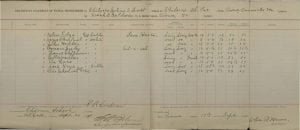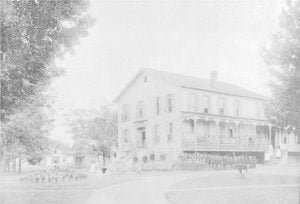Children Transferred to Chilocco School, 1885-1902
This series includes originals of Form 5-138 describing children transferred from an agency to Chilocco Indian School. The statement is signed by the agent and certified by the physician of the home agency of the children. Information about children includes Indian name, English name, blood degree, nation, band, father’s name and rank, whether parents are living or dead, child’s sex, age, height, weight, and remarks.



